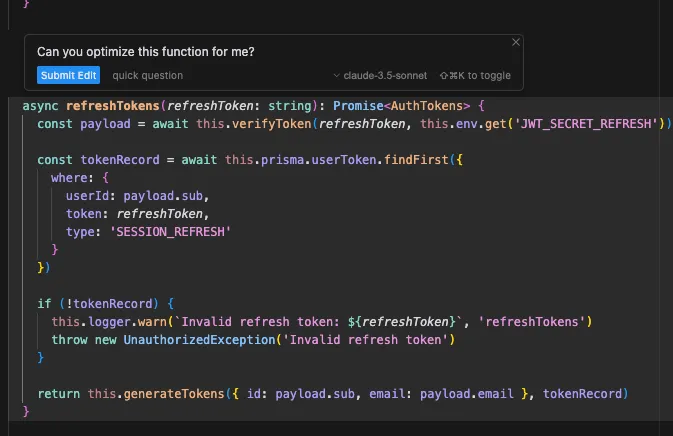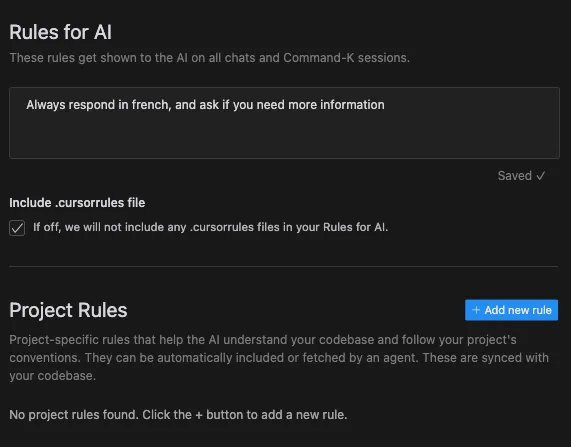The way developers interact with their IDEs is undergoing a revolution. Traditional IDEs like VS Code have long dominated the development landscape, offering a highly extensible platform with a vast ecosystem of plugins. However, a new breed of AI-powered IDEs is emerging, redefining the way developers write, debug and manage code. The two main players in this space are Cursor and Windsurf, both designed from the outset to fully integrate AI-driven workflows, making coding faster, more intuitive and more context-aware. But how do these AI-native IDEs compare to traditional setups such as VS Code with AI plugins? Let’s take a closer look.
The rise of AI-driven IDEs: Cursor, Windsurf, …
- 24/02/2025
AI-Native IDEs vs. Traditional IDEs
1. Cursor and Windsurf: AI at the Core
Unlike traditional IDEs that rely on third-party extensions to integrate AI, Cursor and Windsurf are built with AI at their core. Instead of being just another tool added to an existing platform, they are designed from the outset to integrate AI-driven workflows seamlessly.
- Cursor is built on a fork of VS Code, meaning it retains the familiar interface, extensions, and ecosystem that many developers already use. However, Cursor takes AI assistance several steps further, making it a deeply integrated part of the coding experience.
- Windsurf is a completely AI-native IDE, built from scratch with AI at its core, rather than being a fork of an existing IDE like VS Code. This means that Windsurf rethinks the entire development experience by leveraging AI at every stage of the process.
Key benefits of native IDEs for AI :
- Deeper AI integration → Instead of AI being a separate feature, it’s woven into every aspect of the IDE.
- Real-time assistance → AI models analyze entire projects, suggest refactorings and help debug problems automatically.
- Enhanced context awareness → AI understands file structures, dependencies and previous code changes.
2. Traditional IDEs with AI plugins: still lagging behind
While VS Code, JetBrains IDEs and others integrate AI through plugins like GitHub Copilot or Tabnine, they lack the deep system-wide AI integration found in Cursor and Windsurf.
- VS Code + GitHub Copilot → Offers solid AI-driven code suggestions, but still functions as an add-on rather than being fully integrated with IDE logic.
- JetBrains AI Integrations → As with VS Code, AI remains a feature rather than a core design element.
Challenges of AI plugins in traditional IDEs:
- Limited contextual knowledge → Plugins work in isolated files, without in-depth understanding of the project as a whole.
- Heavier resource consumption → AI-powered plugins often run separately, resulting in higher memory usage.
- Not optimized for AI workflows → Features such as AI-assisted debugging and refactoring are more limited.

The Power of AI-Driven Development
With the right expertise in SaaS development and AI, Cursor is not just an assistant, it’s a game-changing productivity multiplier for developers. One of the most remarkable aspects of Cursor is its ability to dramatically reduce development time thanks to AI assistance. Unlike traditional IDEs, in which developers have to search, debug and write standard code manually, Cursor relies on AI to handle these tasks with astonishing reliability.
Key Features That Make Cursor a Game-Changer
- AI-Assisted Code Generation → Need to build a complex API endpoint or a Front-End (React, Vue, Angular, what you want) component? Cursor can generate fully functional code snippets that integrate seamlessly into your project.


- Context-sensitive debugging → No need to spend hours searching for an obscure bug. Cursor analyzes your code base, understands its structure and suggests precise fixes.
- Automated code refactoring → Cursor can rewrite messy or inefficient code into clean, maintainable solutions, ensuring the scalability of your SaaS project (can be driven by your own rules in a .cursorerules file, e.g. SOLID Principle? Clean code? A model for writing your files…)

- Backend and frontend optimization → Whether it’s generating database queries, setting up authentication workflows or even scaffolding a complete administration dashboard, Cursor’s AI saves development days by delivering production-ready solutions.
- Creating custom rules for enhanced support → Cursor allows developers to define custom rule sets that refine the AI’s suggestions. This means that the AI can generate code that strictly adheres to team coding conventions, architectural patterns and project-specific requirements. By refining these rules, developers can push the AI to deliver more precise and structured solutions.

- AI-driven codebase navigation and search → Cursor doesn’t just help write code, it revolutionizes the way developers interact with their entire codebase. Thanks to AI-driven search and navigation, developers can instantly locate relevant code snippets, understand dependencies and traverse vast projects effortlessly.
- Seamless integration with existing extensions → Since Cursor is a fork of VS Code, it retains full compatibility with a wide range of extensions, allowing developers to retain their existing workflows while benefiting from deep AI integration.
- Privacy mode for secure development → For sensitive projects, Cursor includes a privacy mode in which user code is never stored remotely, guaranteeing confidentiality and data protection.
The Pitfalls of AI-Assisted IDEs
While AI-driven IDEs like Cursor offer unrivalled productivity gains, they come with certain challenges that developers need to be aware of. The effectiveness of these tools depends largely on how they are used, and without the right approach, they can sometimes hinder more than they help.

1. Expertise Matters: AI Won’t Replace Deep Knowledge
AI-enabled IDEs are only as good as the prompts and instructions they receive. If a developer doesn’t have a good understanding of what they want to build, they may struggle to provide precise, actionable instructions. AI will generate code based on vague requests, but without proper guidance, the result may be inefficient, incorrect or misaligned with project requirements.
💡 Solution: developers must first master the fundamental concepts of their stack before relying on AI-generated code. The more experience they have, the more they can refine the prompts to achieve the desired results.
2. Security Risks: Handling Sensitive Data with Caution
Although AI-assisted IDEs implement confidentiality features, there is always a risk when sending code snippets to AI models. Proprietary logic, API keys or sensitive business logic should never be used directly in AI-assisted workflows without appropriate sanitization.
💡 Solution: Always sanitize confidential data before interacting with AI. Use substitute values instead of sensitive information.
3. AI Can Make Mistakes (Sometimes, Big Ones)
Despite its capabilities, AI remains imperfect and can sometimes misinterpret a request, generating incorrect or sub-optimal code. In some cases, AI can introduce subtle logical errors or over-engineer a solution, making it unnecessarily complex. And sometimes even generate or modify code that you might not even notice.
💡 Solution: Developers should always examine AI-generated code carefully. Never assume that because the AI wrote it, it must be correct. Debug, test and validate everything before moving on to production.

4. The speed trap: going too fast can lead to excessive complication
One of the main advantages of AI-assisted development is speed, but speed can be a double-edged sword. When developers can generate features quickly, they can end up over-complicating a solution that could have been built more simply (I’ve saved 2 days, can I afford to do a bit more?).
💡 Solution: keep it simple. Always ask yourself: is this the best way to achieve my goal? AI should accelerate development, not create unnecessary complexity.
5. Over-reliance on AI: a dangerous habit
AI should be seen as a co-pilot, not an autopilot. Relying too much on AI for everything can lead to a decline in problem-solving skills, as developers can get used to AI doing the heavy lifting instead of thinking up solutions themselves.
💡 Solution: use AI strategically. Treat it as a helper, but continue to practice manual debugging, architectural planning and design thinking to retain critical problem-solving skills.
Conclusion: AI-Powered IDEs — A New Era, But Not Without Its Challenges
The emergence of AI-driven IDEs such as Cursor and Windsurf represents a paradigm shift in the way developers write, debug and manage code. IDEs are no longer just passive tools; they are becoming active collaborators, streamlining workflows and accelerating development at an unprecedented rate.
However, speed is no substitute for expertise. While these AI-native environments can generate entire functionalities in a matter of minutes, only skilled developers who understand the underlying logic, best practices and precise prompts will be able to exploit their full potential. Without a solid foundation in software development, AI-assisted tools can easily become a crutch rather than a catalyst.
In addition, security issues, excessive complication and the risk of blind trust need to be carefully managed. AI will always need human supervision, whether to refine prompts, sanitize sensitive data or ensure that the code generated aligns with business needs and scalability standards.
The future belongs to developers who adapt
AI-assisted IDEs are not there to replace developers, but to empower them. Those who adopt these tools strategically, refine their workflows and remain vigilant about the limits of AI will have an undeniable advantage in the ever-changing technological landscape.
The question is no longer whether AI will change development — it already has. The real question is: are you ready to evolve with it?
@nthoGac
SaaS Engineer & Writer

